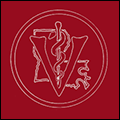Measuring the level of agreement between a veterinary and a human point-of-care glucometer and a laboratory blood analyzer in Hispaniolan Amazon parrots (Amazona ventralis)
Document Type
Article
Publication Date
12-1-2012
Abstract
Although abnormalities in blood glucose concentrations in avian species are not as common as they are in mammals, the inability to provide point-of-care glucose measurement likely results in underreporting and missed treatment opportunities. A veterinary glucometer that uses different optimization codes for specific groups of animals has been produced. To obtain data for a psittacine bird-specific optimization code, as well as to calculate agreement between the veterinary glucometer, a standard human glucometer, and a laboratory analyzer, blood samples were obtained from 25 Hispaniolan Amazon parrots (Amazona ventralis) in a 2-phase study. In the initial phase, blood samples were obtained from 20 parrots twice at a 2-week interval. For each sample, the packed cell volume was determined, and the blood glucose concentration was measured by the veterinary glucometer. The rest of each sample was placed into a lithium heparin microtainer tube and centrifuged, and plasma was removed and frozen at -30 degrees C. Within 5 days, tubes were thawed, and blood glucose concentrations were measured with a laboratory analyzer. The data from both procedures were used to develop a psittacine bird-specific code. For the second phase of the study, the same procedure was repeated twice at a 2-week interval in 25 birds to determine agreement between the veterinary glucometer, a standard human glucometer, and a laboratory analyzer. Neither glucometer was in good agreement with the laboratory analyzer (veterinary glucometer bias, 9.0; level of agreement, -38.1 to 56.2; standard glucometer bias, 69.4; level of agreement -17.8 to 156.7). Based on these results, the use of handheld glucometers in the diagnostic testing of Hispaniolan Amazon parrots and other psittacine birds cannot be recommended.
Publication Source (Journal or Book title)
Journal of avian medicine and surgery
First Page
221
Last Page
4
Recommended Citation
Acierno, M. J., Schnellbacher, R., & Tully, T. N. (2012). Measuring the level of agreement between a veterinary and a human point-of-care glucometer and a laboratory blood analyzer in Hispaniolan Amazon parrots (Amazona ventralis). Journal of avian medicine and surgery, 26 (4), 221-4. https://doi.org/10.1647/2011-038R1.1

